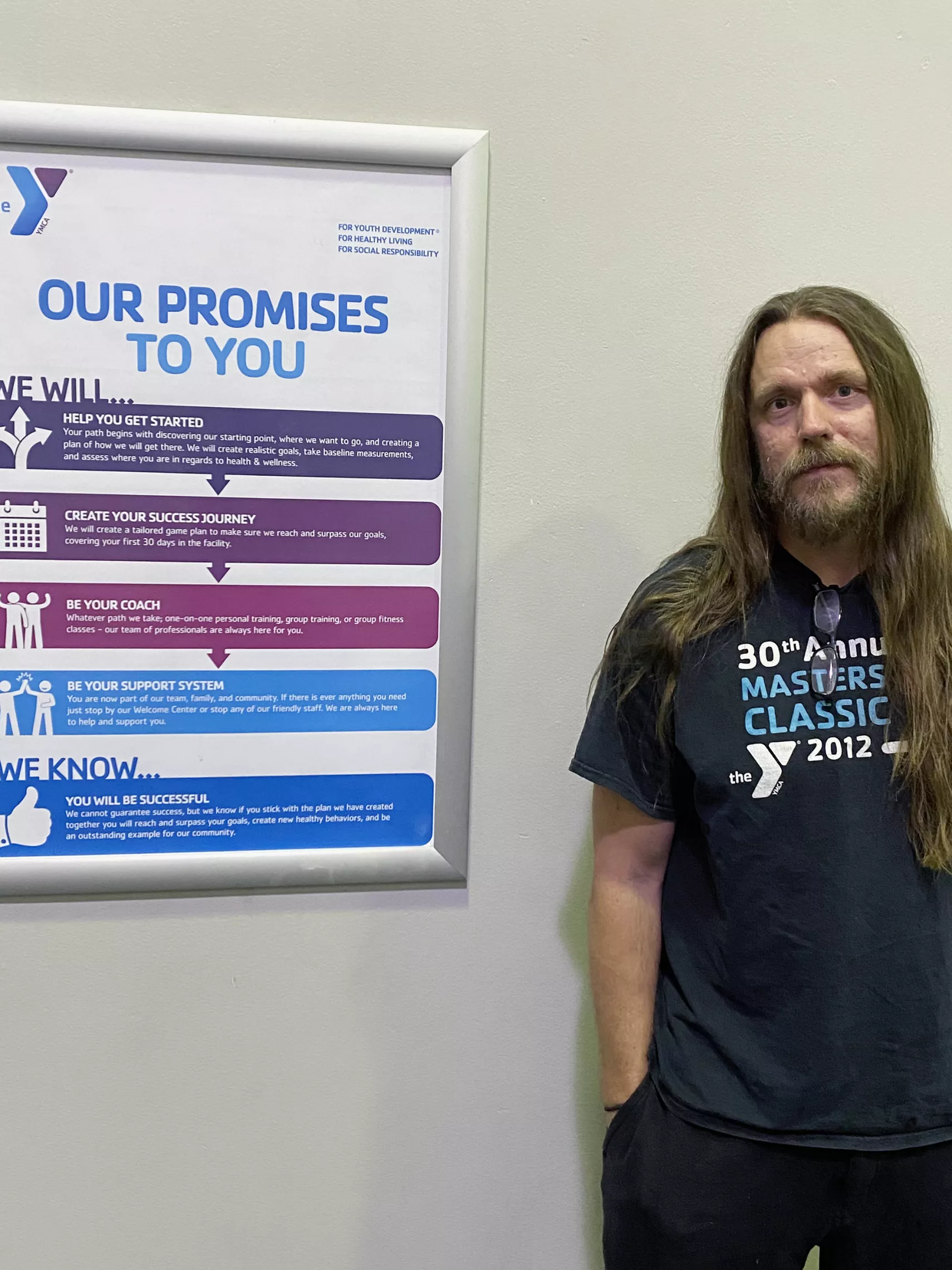
Indoor & Outdoor Exercise - What to do?
While training for a certification in “Natural Movement,” I learned a powerful mantra: “Be strong to be useful.” I find the simplicity of this idea extremely helpful because it requires that you determine what strength and fitness means to you. The past year and a half has forced many of us to re-evaluate what it means to “work out.” Access to a gym or group exercise classes may have been limited, schedules changed, motivations may have ebbed or shifted. The challenge is to find a way to move, develop strength, endurance and mobility regardless of time constraints, limited space or lack of equipment. If we have the right mindset, that may not be as challenging as it seems. The beautiful thing about the human animal is in our ability to move in diverse ways in all types of environments. If we think about MOVEMENTS, not just muscles, we can be very creative and still get a great “workout” with the lowest effective dose of exercise, whether it’s in a gym or in your backyard. Ultimately, we are looking for ways to make ourselves strong “to be useful”. Let’s break down two basic components of a workout, cardio and strength, and I’ll provide some tips on how to get each component into your day, whether you’re inside or outside. We’re not going to overthink it, especially if you are just starting out or returning to planned physical activity. By the way, warmup & cool downs are implied here, don’t just start & stop at a high effort and high intensity. Build it up, then bring it down.
>>>Cardio/Endurance
There are so many methods and philosophies on cardio training, whether it’s for health, preparation for an event or body composition change. All are variations on a pretty simple theme: We need to get our heart rate (HR) elevated for a little while. The quicker we can recover from that HR elevation the better. If you’re using a HR monitoring technology, the app can calculate your training zones. Sans technology we can use the Rate of Perceived Exertion (RPE). On a scale of 1-10, how hard are you working?
1 = sitting on the couch doing nothing.
10 = absolute peak exertion, a full sprint.
For those just looking to build a good cardio base, work to get to a 7 RPE, which means it’s a tough pace, but manageable. You could have a conversation with someone next to you with a little huffing and puffing. 20-30 minutes of cardio most days of the week will go a long way into building a good cardio base.
- CARDIO INSIDE:
At the Y or any fitness facility you’ll find all sorts of cardio machines most of which come with some outstanding pre-set programs. Choose the one that feels natural and experiment a bit. Any pain in the joints is a sign that either your posture or movement isn’t quite all there OR it’s just not the right machine for you. Play around with what your facility has to offer and don’t hesitate to ask a trainer or Wellness Coach for their insights. You may surprise yourself. I’ve seen so many Y members find their “go to” cardio just by asking about a machine they were initially scared to try on their own. For instance, the rowing machine has become addictively challenging to many of my clients. It just took a little coaching. Non-machine based cardio like battle ropes, kettlebell swings, medicine ball routines are all nice options to get some diverse movement in while getting the HR up if stationary machines bore you to tears.
- CARDIO OUTSIDE:
Run. Walk. Jog. Skip. Seriously, just get out and play. During the pandemic I often found myself in parks and playgrounds putting together little circuits. For example, I’d crawl for 20 feet, jump on a step 8 times, skip to the curb, walk the curb like a balance beam for 10 steps, jog to the monkey bars and hang for time, repeat for 20 minutes. There was no wrong answer as long as I felt challenged, made sure the environment was safe and remained mindful of form. If you have a jump rope, you have a cardio machine. If you have a steep hill or high school track with some stadium stairs nearby, OH BOY, can you get that HR up! A bike ride can be challenging cardio or a relaxing day outside...during the same ride! When we strip away all the machines and technology, we are left with the movements we performed for fun as a child. Scan the environment, make up an obstacle course, and PLAY! If you feel that heart beating, feel the blood pumping a bit, you win! You’re getting your “cardio” in, and got outside with some sun and fresh air as a bonus.
>>>Strength/Endurance
Like cardio, there are so many ways to train strength. We’re going to keep it simple here. If you have specific strength or body composition goals, the plan may change a bit. Feel free to consult with a trainer at your facility if you need more details. In this blog, we are trying to “be strong to be useful” so we are stripping it down. If you’re newer to strength training, start light and high, slow reps, maybe 1-3 sets of 15 reps, a couple times per week. Now let’s think about primal movements as it pertains to strength training -
- Squat (knees and hips move together)
- Hip Hinge/deadlift/swing (Hips are the prime mover)
- Lunge or Step (knees and hips move together, split stance)
- Upper body push
- Upper Body Pull
- Core Stability, rotation & anti-rotation
- STRENGTH/ENDURANCE INSIDE:
There are lots of options for resistance training in a gym environment (or at home with some equipment). The goal is to put some kind of resistance on the muscles. It can be bodyweight (a great option if you’re new to resistance training), resistance bands, dumbbells, barbells, etc. all provide resistance. If we pick our resistance and think of the aforementioned movement patterns, all we need to plan for now is reps, sets and tempo. As long as we squat, lunge or hinge (or all three) for the lower body, push and pull for the upper body and add either a plank or anti-rotation core movement and you have yourself a whole body gym workout.
- STRENGTH/ENDURANCE OUTSIDE:
See above. Seriously. If you have dumbbells or bands that are easy to transport, awesome! All the movements and rep schemes still apply. If not, no worries, here’s where the fun begins. Finding awkward yet usable objects is a great way to build functional strength. A squat is still a squat whether I have a dumbbell in my hands or a landscaping rock from my backyard. Playgrounds are great places to find a bar to do pull ups or rows. Lunges and steps can be done to great effect anywhere. Is there any more perfectly simple upper body strength exercise than a pushup? I have a few heavy, yet manageable logs from a downed tree that I just randomly carry around my yard; an unexpected bonus from a nasty storm from a couple years ago. You can even combine your cardio and strength. If you’re out on a walk or jog and see a bench along the way, stop and do 15 dips. Then resume your forward momentum. Or pick a distance that you can jog in less than a minute. Choose a lower/upper bodyweight split (squats & pushups?) and walk or run the set distance and do one exercise on one end, jog back and do the other. Just teeter-totter back and forth for a few rounds. Like the outdoor cardio, there are no wrong answers as long as we are moving with intention and with good form. Try to make it look “pretty”.
Sometimes, the hardest part about working out is overcoming the mental inertia of deciding what to do. If you have a very specific goal to achieve, the goal can help define the path. If we just want to be fit, healthy and strong, we have so many options. I love working with Y members, both in class and one-on-one settings, teaching and seeing them “be strong to be useful” in their own way. But really I just want you to move. Whether it’s at the Y or another fitness facility, in your home or outside in a park. Keep it simple, keep it challenging and just keep moving!
-Dan Kohler, Downtown YMCA Lead Personal Trainer
Interested in working with a Y Personal Trainer? Click below to learn more!
Learn more about Personal Training
